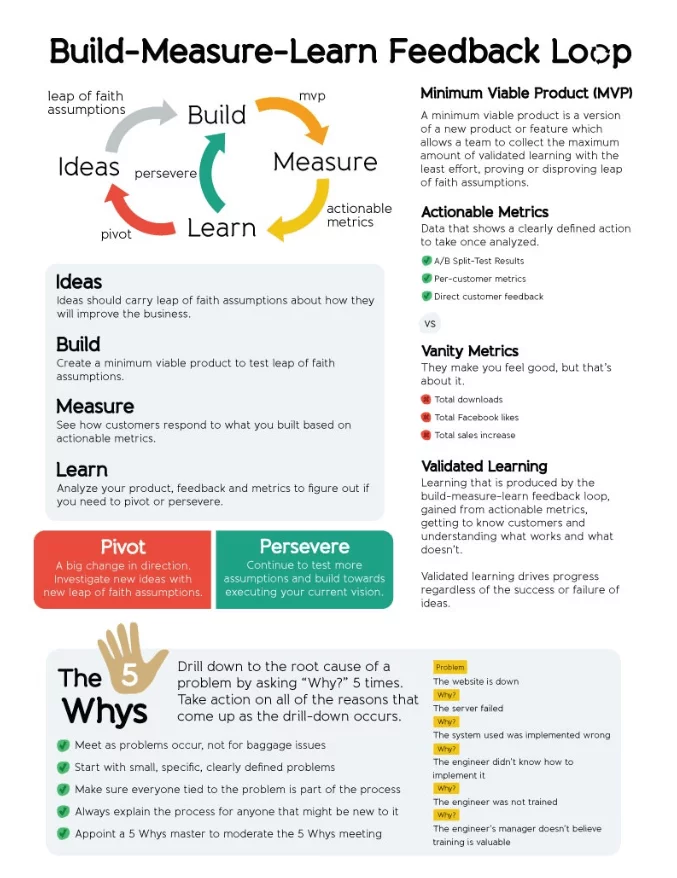Digital transformation is the new California Gold Rush. Companies are racing through the process in the hopes of gaining a digital edge on the competition. But if you move too fast, your new technology will quickly overwhelm your employees, and become a burden instead of an opportunity.
The key is knowing how to train your employees to use new digital tools as they were intended and to their fullest extent — so they achieve digital adoption. Without an effective training model, your employees will suffer from software training overload.
If your company is pursuing digital transformation, you must focus on minimizing the learning curve and reducing software training overload. Otherwise, digital adoption will always be out of reach.
5 digital adoption tips to make software training overload vanish
It is vital to understand that employee software training has a direct impact on morale, productivity, and satisfaction. The better the training program, the better the results of the new software.
Here are 5 digital adoption tips to make software training as painless and effective as possible.
1. Minimize cognitive load
Cognitive load is the volume of mental resources required to use a system. The idea originated in cognitive psychology but is often cited by usability experts.
Steve Krug popularized the concept in his book on website design, Don’t Make Me Think. According to usability professionals such as Krug, cognitive load negatively correlates with usability.
Simple products are easy to use, have a small cognitive weight, and offer better user experiences. Complex products, however, are the opposite.
When you are installing a complex software product, though, the effectiveness of the software training program will determine usability and cognitive load.
User experience consultants at the Nielsen-Norman Group offer three tips for reducing cognitive load and improving usability:
- Avoid visual clutter in designs
- Build on existing mental models — familiar design layouts and labels, for instance
- Offload tasks that require brainpower
A related concept is interaction cost, or the amount of effort a user must expend to interact with a design. The Nielsen-Norman Group also expounds upon this idea in their usability research.
Applying these ideas to the software training program itself can contribute to a smoother onboarding process.
Discover how a Digital Adoption Platform (DAP) simplifies training and boosts adoption. Request a demo today.
2. Minimize fear of change
Resistance to change is a natural instinct.
But in a digital marketplace fueled by change, resistance can hinder business growth and stifle innovation.
To achieve digital adoption, software training must find ways to work past the fear of change.
The first step to tackling it is understanding its source. Resistance to new software, whether it’s a significant version update or a new platform entirely, usually comes because employees fear incompetence and not being able to do their tasks efficiently.
Addressing this resistance during software training can be an effective way to nip it in the bud. A few ways to do that:
- Don’t treat training as an afterthought — if it’s improperly handled, software users can become frustrated, demoralized, and less productive with the new tools
- Acknowledge resistance openly
- Address it head-on through discussions or in training materials
- Develop a truly effective training program — the more effective it is, the more quickly fear will be dissipated
Up next on your reading list: The CEO’s Guide to Successful Change Management
While there is no magic bullet to eliminating the fear of change, a well-crafted onboarding process can help turn the tide more quickly than you might think.
3. Measure and learn
The lean methodology, which takes a customer-centric business approach, has become quite popular in the software industry. It is similar to agile business practices, encouraging customer-driven development, experimentation, and frequent, fast delivery.
In The Lean Startup, by Eric Ries, he boils the lean process down to a 3-step “Build-Measure-Learn” cycle. Infographic source: Medium
Infographic source: Medium
During the first stage of the cycle, the goal is to release a minimally viable version of the product quickly.
Then, product developers can measure results, learn from them, and implement those into the next product iteration.
A process like this originated on Toyota factory floors, then spread to the startup world. The core concepts can be applied everywhere, and software training is no exception.
There are big benefits to following such a user-centric approach in software training:
- For one thing, it can keep training programs on target
- It can help trainers release relevant material faster
- This can, in turn, keep training costs down and improve employee satisfaction
While a full-blown business model isn’t advisable, it can be very profitable to measure and learn from employee usage.
4. Create training systems that are non-linear, preventive, and personal
Linear training material, such as a webinar or manual, is broad and comprehensive. It can be useful in the right circumstances, but it is also time-consuming.
Non-linear materials, however, can create a much more personalized, specific learning curve. Here are a few examples:
- Knowledge bases
- Chat bots
- Contextual learning
The last example is not nearly as widely used as it should be.
Yet it also offers the most potential.
Analytics, when combined with in-app training systems, can reduce a great deal of waste during onboarding. Benefits can come in the form of deeper insights, personalized in-app guidance, and user segmentation, just to name a few.
5. Automate onboarding, teaching, and error-handling
Knowledge bases and searchable repositories represent a step-up from linear training materials.
However, there is a better way: automate the onboarding process with in-app training.
Automating onboarding by training inside the software itself is by far the most effective software training method to date. With automation, employees learn to use new tools faster with more tailored support. This helps them maintain high productivity, even if they don’t know how to use the platform or app. They are also protected from making errors to ensure high reliability and data integrity.
Employees no longer need to search for answers, sit through videos that may only be partially relevant, or submit tickets and waste time.
The takeaway
Today, software usability has become a focal point for many digital businesses.
When applied to software training and onboarding, taking employees as the users, digital adoption tips such as these come to the foreground.
Companies undergoing digital transformation may want to try applying a few of these ideas in their own software training programs. After all, improved onboarding will reduce employee burnout, improve morale, and boost productivity.
__________
WalkMe’s Digital Adoption Platform (DAP) transforms the user experience in today’s overwhelming digital world. Using artificial intelligence, engagement, guidance, and automation, WalkMe’s transparent overlay assists users to complete tasks easily within any enterprise software, mobile application or website. Discover how a DAP can revolutionize your business — request a demo today.

